An air source heat pump comes in handy when you want to enjoy multiple heating, ventilation, and air conditioning (HVAC) solutions for your home all year round.
It is a highly versatile electrical appliance that mainly offers heating solutions during winter and cooling in the summer. It’s also suitable for domestic water heating, dehumidification, and air conditioning.
This article will explore the ins and outs of air source heat pumps (ASHPs) as an HVAC solution for your spaces such as homes and offices. Read on for an in-depth overview of this excellent solution for nearly all your HVAC needs!
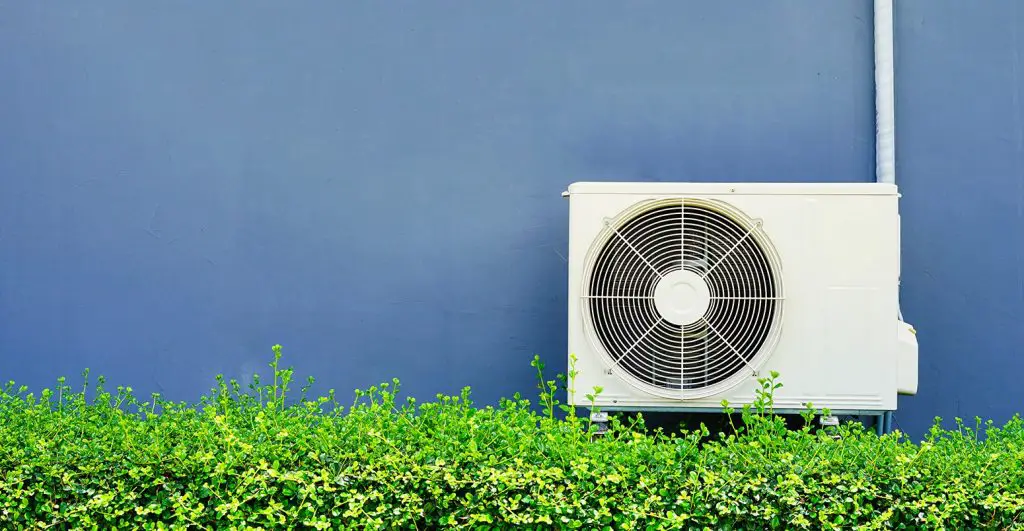
Parts of An Air Source Heat Pump
The typical air source heat pump consists of two parts that make up the split system comprising an indoor air handler and an outdoor unit. The two units work together to ensure the proper distribution of cool or warm air into your interior spaces.
Other than basic electrical parts and a fan, an air source heat pump comprises the following components:
- Control Board: This part controls the heat pump’s operating mode between defrost, heating, or cooling.
- Refrigerant: The fluid that substance flows through the refrigeration tubes in the outdoor and indoor units.
- The Accumulator: The reservoir holding the refrigerant and regulates it to match varying seasonal needs.
- Ducts: These are the tubings that channel air through the system and within the home.
- Heat Strips: These are heating elements added to provide auxiliary heat during cold days.
- Thermostat: For setting varying desired temperatures.
- Thermostatic Expansion Valves: For regulating refrigerant flow.
- Coils: Based on which direction the refrigerant is flowing, the evaporating and condenser coils help cool or heat the air.
- Reversing Valves: For changing refrigerant flow to alternate between heating and cooling of interior spaces.
- Refrigeration Pipes and Lines: For connecting the indoor and outdoor units.
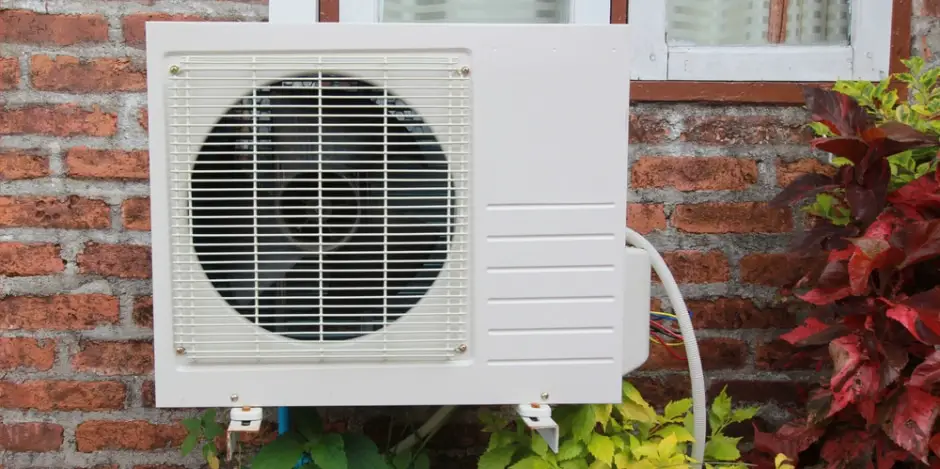
What is an Air Source Heat Pump and What Does it Do?
An air source heat pump is an HVAC electrical appliance for cooling and heating interior spaces. It transfers heat from outdoor air to an indoor space, which is basically absorbing heat from one medium and moving it to another.
Air source pumps are highly versatile and can be used for cooling and heating spaces, domestic water heating, dehumidification, and air conditioning. They are an all-in-one solution for your varying HVAC needs throughout the year.
You can use an air source heat pump for cooling in the summer, while the heating mode comes in handy during the cold, unbearable winter days – preferably a cold climate ASHP (ccASHP.)
Some models can attain a flow temperature (temperature of the water in the system) of up to 55°C and are the best option for both space heating and domestic water heating if you need both.
However, if space heating is your only concern, an air source heat pump with a flow temperature of 35°C will come in handy.
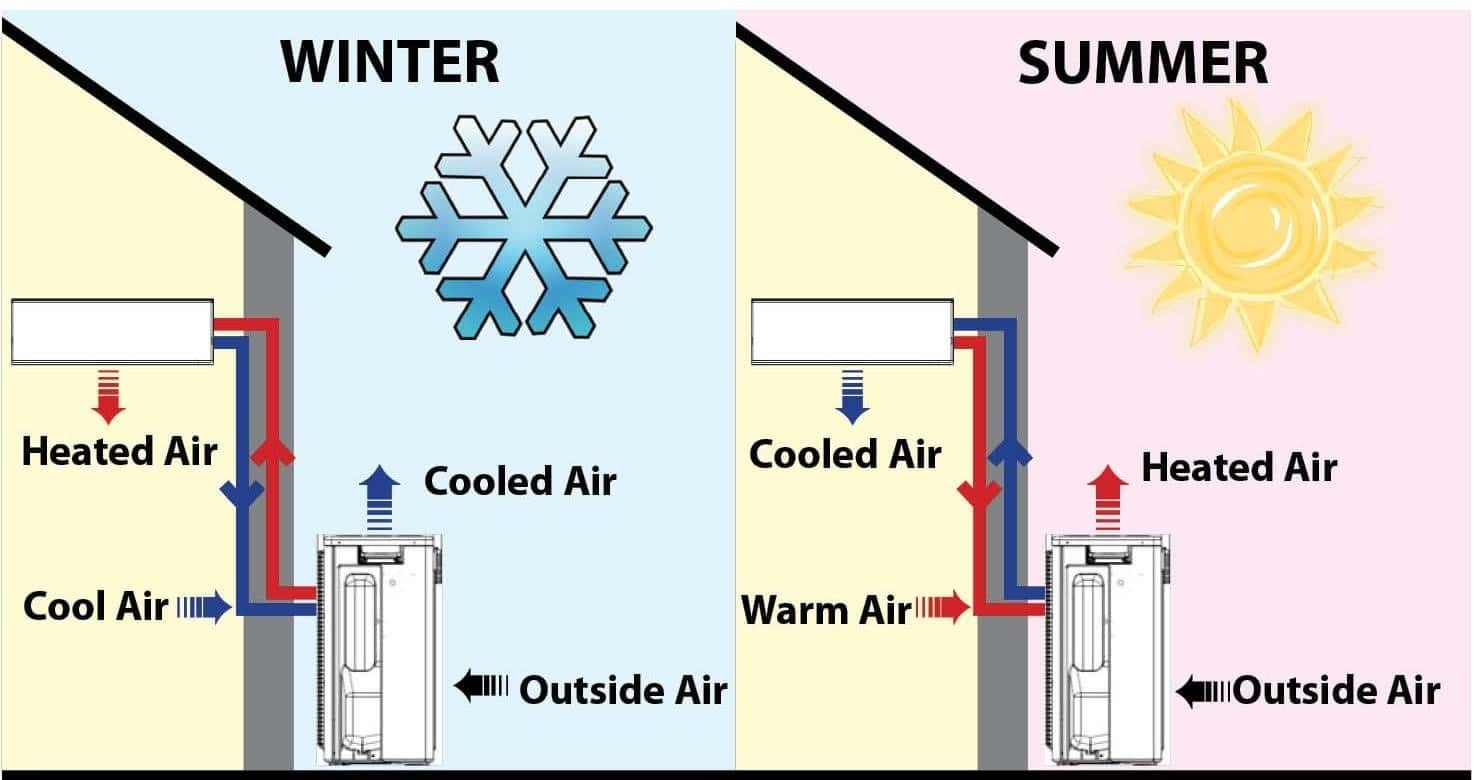
How Does an Air Source Heat Pump Work?
Air source heat pumps are mainly used for heating and cooling of interior spaces using the mechanisms below.
Air Source Heat Pump for Heating
The heating mode of an air source heat pump helps regulate indoor temperatures during winter through the following process:
- The heat pump reverses the refrigeration cycle to switch to the heating mode by making the coil in the outdoor unit work as the evaporator while the indoor coil works as the condenser.
- The refrigerant is circulated within the indoor and outdoor units through the closed-loop network of refrigeration pipes and lines.
- Even when the outside air is cold, the air source heat pump absorbs heat from the air and transmits it to the interior space.
- A motorized fan pulls air from inside the house through the ductwork.
- The refrigerant flows from the interior coil to the exterior coil to absorb heat energy from the air.
- The now warm air flows through the ducts into the home’s air vents, thus raising the temperatures inside the house.
- The cycle is repeated sustainably to keep the house warm constantly.
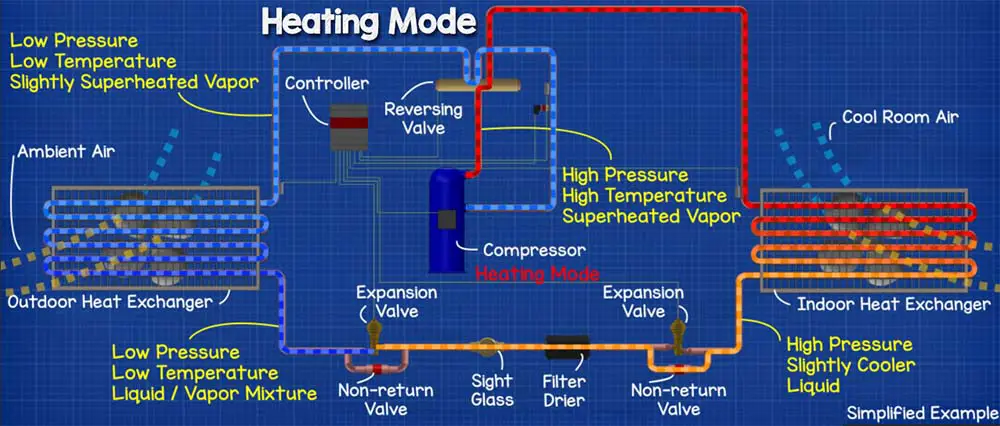
Air Source Heat Pump for Cooling
The cooling mode of an air source heat pump helps cool down the house while lowering the humidity levels in your home.
- A motorized fan pulls warm air from the house through the ductwork.
- The coolant or refrigerant flows within the outdoor condenser and the indoor condensing unit.
- Warm indoor air is circulated to the air handler as the refrigerant absorbs heat from it as it travels through the outdoor condenser to the evaporator coil in the indoor unit.
- The now dehumidified and cooled air flows into the air vents through the ducts and reduces the home’s internal temperatures.
- The cycle repeatedly happens to maintain coolness all-round the clock.
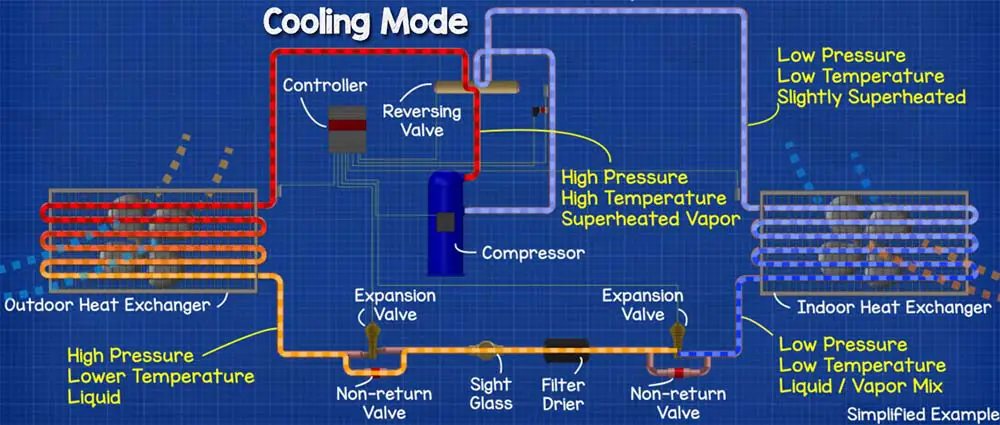
Air Source Heat Pump Pros and Cons
Air source heat pumps are an excellent addition to your home or office space, given their versatility in providing HVAC solutions. However, they are not without their share of disadvantages. Let’s explore some of the advantages and disadvantages of air source heat pumps.
Air Source Heat Pump Pros
Lower Energy Costs
Since it is easier and cheaper to absorb heat than to generate it, an air source heat pump slices down your energy bills when compared to other sources such as coal, oil, or gas-based heating and cooling alternatives.
Versatility in Usage
As mentioned earlier, other than space cooling and heating, air source heat pumps can perform other tasks like air conditioning, water heating, and dehumidification. Heating during the winter is best achieved using a cold climate air ASHP.
For general space heating, an ASHP with a flow temperature of 35°C will work well, while one with 55°C works well for both water heating and space heating.
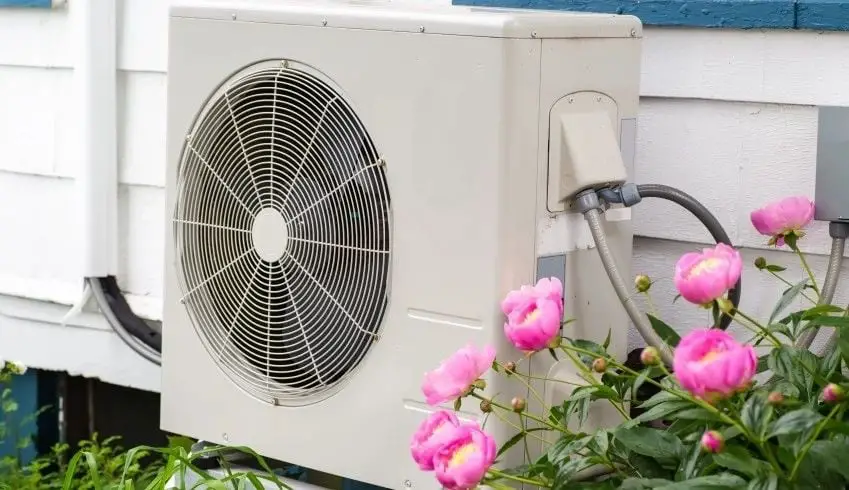
Reduced Carbon Footprint
It’s possible to use an air source heat pump to go green by reducing carbon emissions since it uses an environmentally friendly system of drawing free heat from the atmosphere. It’s an alternative to electricity- and coal-based solutions that emit lots of carbon.
Sustainability
Air source heat pumps are sustainable since they use outdoor air as their fuel, which is freely available and cannot be depleted.
Compatibility with Solar and Wind Energy
You can use an air source heat pump with either solar or wind energy in place of grid electricity to save further on energy costs and reduce your carbon footprint.
Low Maintenance Required
Your air source heat pump system can do with only one maintenance service by a certified HVAC technician.
Other light maintenance tasks you can carry out yourself include inspecting the system for leakages, removing debris and dust, cleaning the filters, and monitoring refrigerant levels.
Ability to Work in Very Low Temperatures
Air source heat pumps can absorb heat from the air as cold as -20°C, with the potential to siphon up to 40°C of heat from outdoor air as cold as -30C.
Eliminates the Need for Fuel Storage Solutions
Unlike other alternatives such as oil-dependent HVAC solutions that require plenty of space to store the fuel source, air source heat pumps do not require any fuel storage plans since air is freely available in the atmosphere all the time.
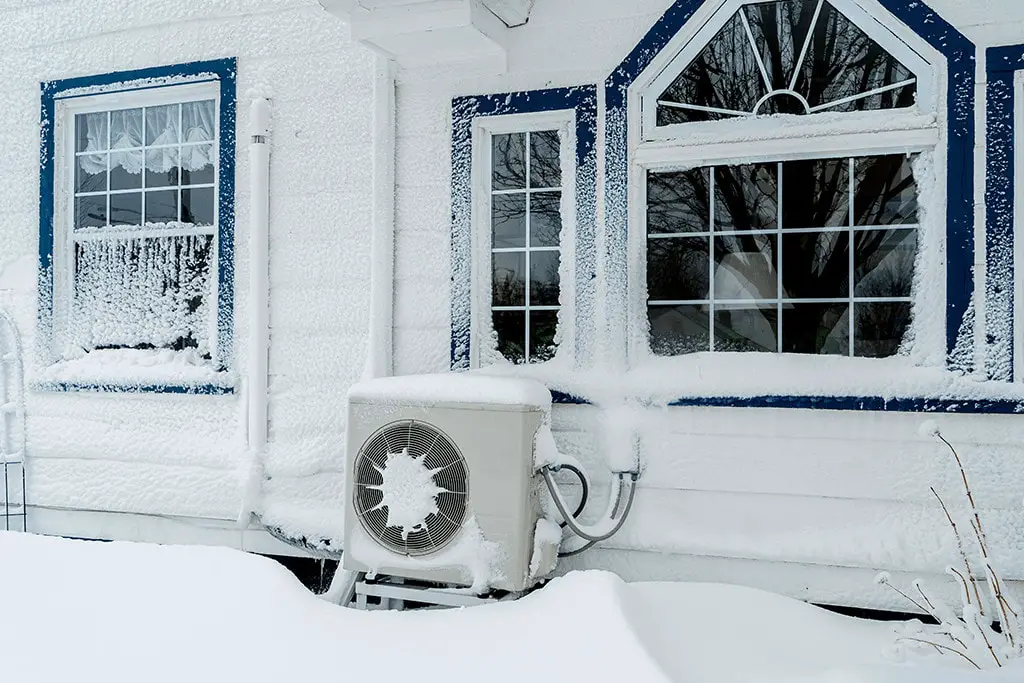
Air Source Heat Pump Cons
Reduced Efficiency Beyond 0°C
Air source heat pumps have a lower efficiency rate at temperatures below 0°C, even as they can easily absorb heat energy from outdoor air at such low temperatures.
Need for Electrical Power
Air source heat pumps are semi-renewable HVAC appliances due to their reliance on electrical power to operate.
The power may be from the electricity grid, wind, or solar energy, meaning that it is a bit hard to go entirely green given that wind and solar energy are not a total guarantee.
Lower Heat Supply Than Other Alternatives
If you compare air source heat pumps with other solutions such as gas- and oil-dependent boilers, they are less productive in terms of heat supply.
As such, you will need a larger ASHP for the same space that other alternatives can easily satisfy. It also follows that you have to ensure your home is well insulated to maximize the ASHP’s output.
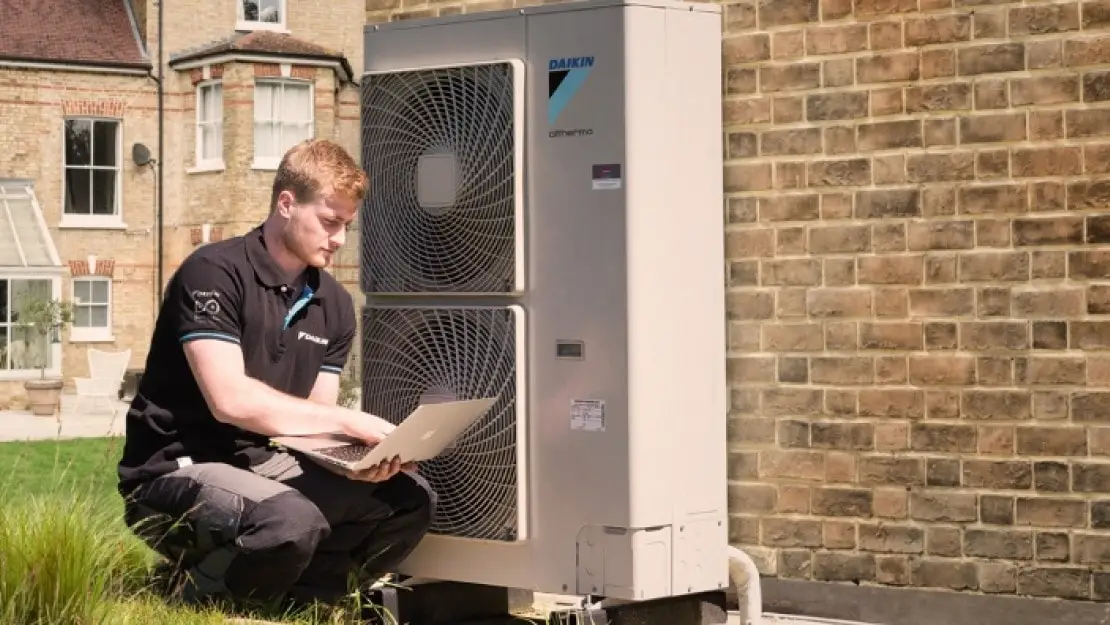
Need for Other Complementary Alternatives
Needless to say, you might require other alternatives such as underfloor heating to maximize the output of the ASHP system.
The need for the extra solution means that you end up spending much more if you don’t have a pre-installed complementary heating and cooling solution.
Types of Air Source Heat Pumps
Air source heat pumps are categorized into the following types:
Air to Water Air Source Heat Pumps
Air to water heat pumps absorb heat from the outdoor air and transfer it indoors through the central heating system to ensure you enjoy domestic hot water heating and underfloor heating. They are suitable for winter heating if the system has a flow temperature of 55°C.
Air to Air Heat Pumps
Air to air heat pumps simply absorb heat energy from outdoor air and transmit it indoors using a fan system.
Ducted Air-source Heat Pumps
Also known as unitary or central ASHPs, ducted heat pumps consist of an outdoor unit that connects to the indoor unit using the ductwork in the house. The ducted setup enables the ASHP to heat and cool the home while still doing central air conditioning.
Ducted ASHPs easily connect to the existing ductwork in your house, although you can install them to replace the central air conditioner.
The ducted network becomes a single system, with the indoor fan connected to the outdoor condenser.
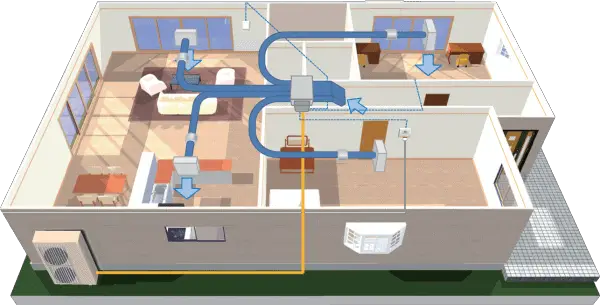
Ductless Air Source Heat Pumps
Ductless air source heat pumps do not require any ductwork to operate.
The system comprises one outdoor condenser that connects to one or multiple indoor air handlers. The indoor air units help with maximizing comfort while minimizing energy costs through zoned cooling and heating.
The indoor air handlers are usually mounted on the floor, wall, or ceiling. You can install a ductless ASHP to replace an existing window air conditioning system or supplement an existing system.
It is easy to control a ductless ASHP since most have wireless or remote controls that allow for controlling every indoor unit on its own for dehumidification, fanning, colling, or heating.
The ability to control the units separately to create independent zones allows you to cool or heat different parts of your house to suit varying comfort needs.
You can even save more on sliced energy bills because it’s easy to turn off some units in zones you aren’t using at a given time.
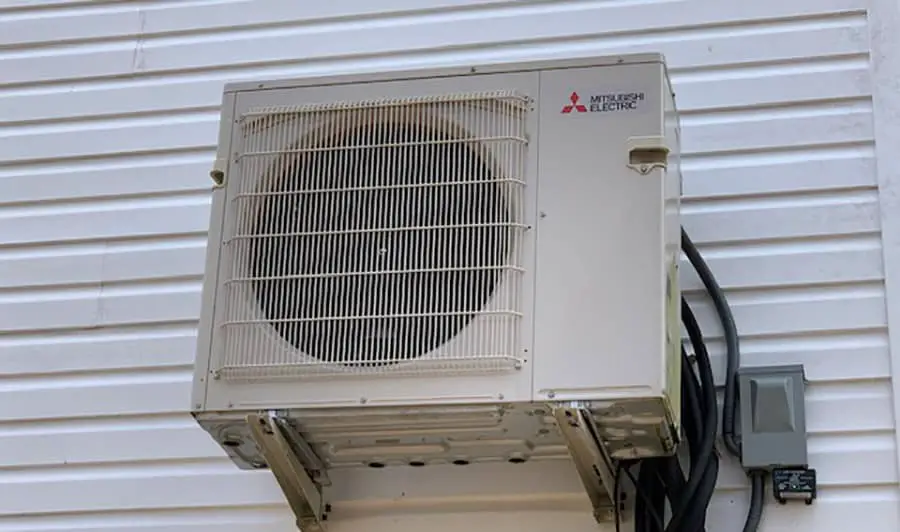
What Size of Air Source Heat Pump Do I Need?
The size of the ASHP you choose will depend on several factors such as home size, the specific areas you want to heat or cool, the type of ASHP, prevailing climate, sun exposure rate, and your preferences.
A 5kW ASHP can adequately serve a 100-square meter house, and you can keep doubling the number for every additional 100 square meters. Most ASHPs are in the 4-15kW output level and can suit the needs of most homes across the country.
It’s important to note that in this case, bigger doesn’t always equate to better. It happens to be true if your house is poorly insulated or if you have other complementary heating and cooling alternatives.
Air Source Heat Pump Sizing Calculator
You can use the calculator below to determine the size of the air source heat pump that is most suitable for your home.
Alternatives to Air Source Heat Pump
As with most other appliances we use in our homes, air source heat pumps have alternatives that you might want to check out, especially if you live in an off-grid area.
You can opt to use the following options for space heating and cooling, water heating, and other HVAC needs.
Solar Thermal Panels
You can go for solar thermal panels for water heating if you can’t find an ASHP with the required 55°C flow temperature for domestic water heating.
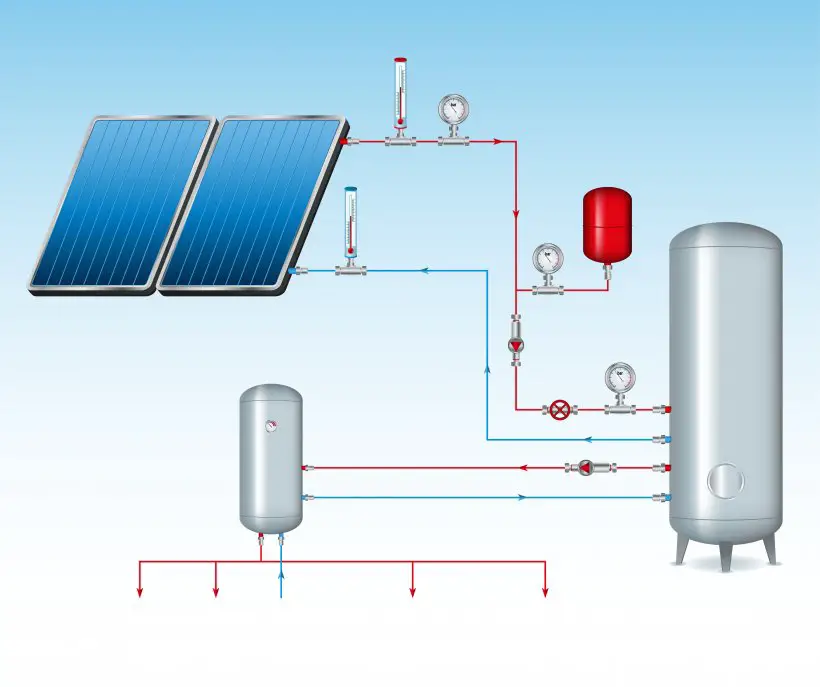
Solar energy is renewable and sustainable and will significantly lower your carbon footprint and save you the money you would spend on energy bills. However, solar thermal panels are expensive to install, and the high cost might knock you off.
Biomass Boilers
Biomass boilers use wood pellets or logs to generate heat for heating your home. They are carbon-neutral since they rely on trees, which naturally absorb carbon from the atmosphere.
Although the upfront installation cost is high, biomass boilers are cheaper than boilers that use fossil fuels. However, you can enjoy reduced prices if you live in a rural area where you don’t need to buy wood pellets or logs if you have your own.
Ground Source vs Air Source Heat Pump
Ground source heat pumps (GSHPs), also known as geothermal heat pumps, are by far the best alternative to air source heat pumps because the ground is more stable as a source of heat than air.
The ground heat the GSHPs absorb and transfer into your home is from the sun and is highly reliable since the ground can retain much of the sun’s heat, eliminating the need for less reliable alternatives like fossil fuels, ASHPs, and biomass boilers.
Ground source heat pumps provide an overhaul home cooling and heating solution that replaces your current central air conditioning and heating system, and all this while still integrating with the available distribution system.
Due to the extensive underground piping network required in a ground source heat pump system, the installation cost may shoot to the roof, making GSHPs more costly than air source heat pumps at the start. However, you have a long-lasting money-saving solution.
Note that you have to confirm if your state allows the installation of GSHPs since there are strict regulations due to the complexity of the systems and the fact that closed-loop GSHPs may encounter refrigerant leaks that are environmentally hazardous though very rare.
Is an Air Source Heat Pump Right for Me?
In case you are unsure whether an air source heat pump is the right heating and cooling solution for you, be sure to consider the factors below.
Your Location
If you live in a mildly hot and cold climate area, you can opt to use an air source heat pump, while a geothermal source heat pump is the best choice if you live in a brutally cold area.
Home Insulation Grading
How well is your home insulated against heat loss in winter? You should first check on how well insulated your home is and make necessary adjustments to ensure that the heat transferred by the air source heat pump is maximized.
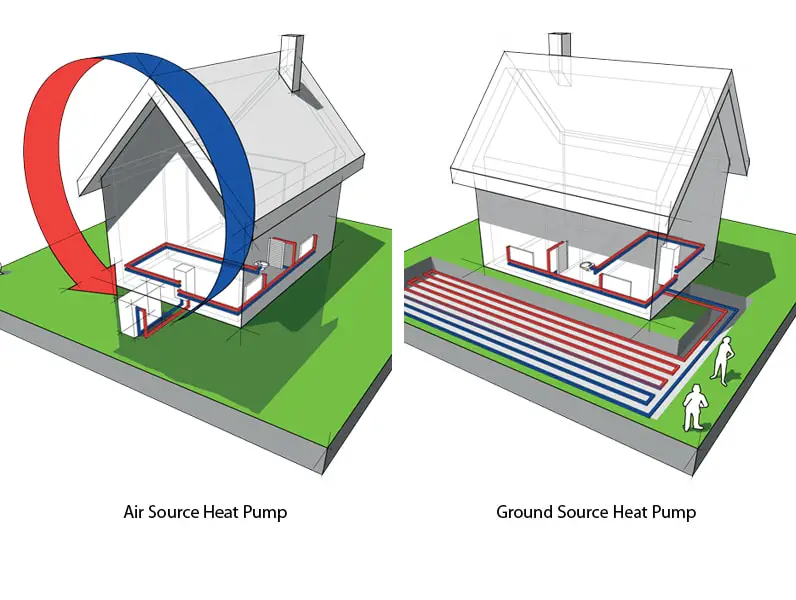
System Costs vs Your Budget
The cost of installing and running an air source heat pump might be too high if your home is large and when additional alternatives are necessary. Ensure that your budget will be enough for the purchase and installation of the ASHP.
Conclusion
You can be the next happy owner of a sustainable air source heat pump for your cooling and heating needs if you want to reduce your carbon footprint, save money on energy bills, and eliminate the need for fuel storage solutions.
Air source heat pumps are an excellent addition to your home, especially the ductless type that allows for controlled and independent cooling and heating of different locations of your home for extra comfort as per your preferences.
Please remember to ensure that your home is well insulated so you can enjoy the advantages of air source heat pumps to the maximum.
People Also Ask
This last section will explore some of the most common questions people ask about air source heat pumps.
We understand that it’s not easy to digest a lot of information at once, which is why we would like for you to bookmark this page for future reference. Feel free to reach out to us if your burning question is not answered here or whenever you need any HVAC advice.
But first…
Given its versatility in offering HVAC solutions, including air conditioning, dehumidification, domestic water heating, and space cooling and heating, air source heat pumps are worth every dollar you pay.
Air source heat pumps can be up to 200-400% efficient, which means that you spend less money on energy bills while enjoying the system’s sustainability because air is freely available and can’t be depleted.
Air source heat pumps use very little electricity because it is easier to absorb heat from the atmosphere than to generate it through power-intensive means.
ASHPs can achieve up to 400% efficiency, which translates to reduced electrical energy consumption since they do not have to overwork to heat the house.
When you consider the initial purchase and installation cost and that electricity is about four times as costly as gas, an ASHP is more expensive than gas for heating and cooling.
However, the high efficiency rate of ASHPs makes them the better and cheaper option in the long run as you spend less on electricity bills because they use very little electrical energy to produce up to 3 to 4 times more heat than gas boilers.
A ductless ASHP costs between $3,500 and $8,500 for every indoor unit, while a ducted ASHP costs $12,000-$20,000. The cost here includes both purchasing and installation expenses.
It’s crucial to ensure you pick the right size of air source heat pump to make the most out of it and enjoy favorable long-term ‘returns on your investment’.
Although air source heat pumps can absorb heat energy from outdoor air at temperatures as low as -20°C, their efficiency reduces at temperatures beyond 0°C. As such, they may not be the most efficient choice in winter where temperatures get to low extremes up to -30°C.
You can expect to pay $2,000-$5,200 for every indoor unit in a ductless air source heat pump, depending on the system’s brand, location, and capacity.
On the other hand, a ducted air source heat pump will cost you $10,550-$15,000, with the higher price attributable to the extra expenses for ductwork.
